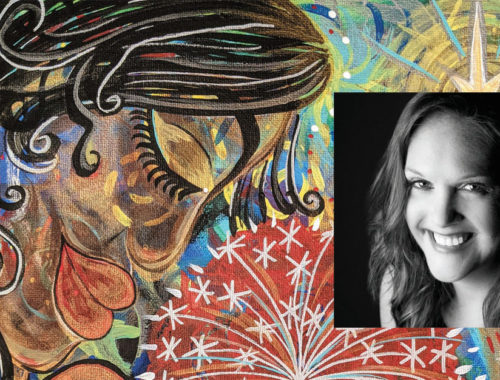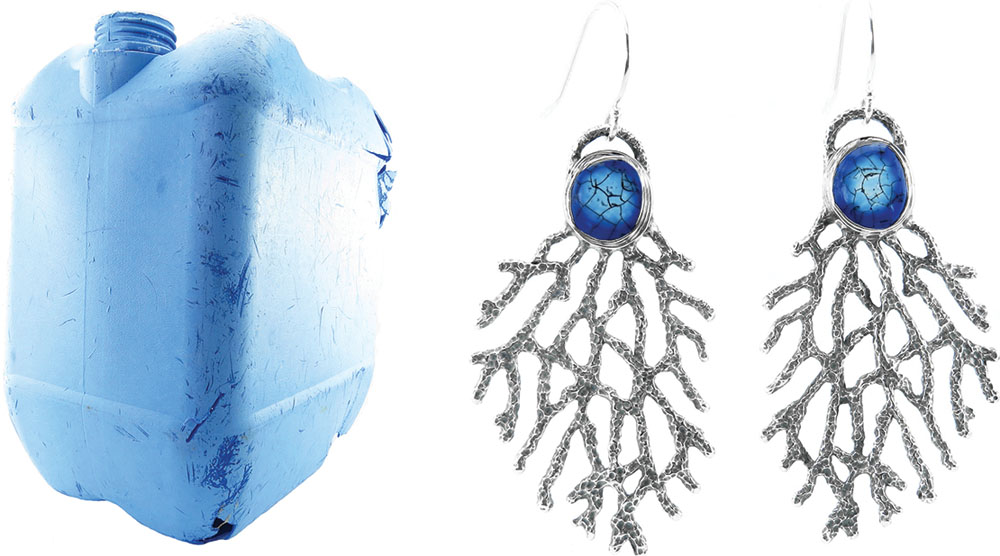
Two Artists Transform Trash into Treasure
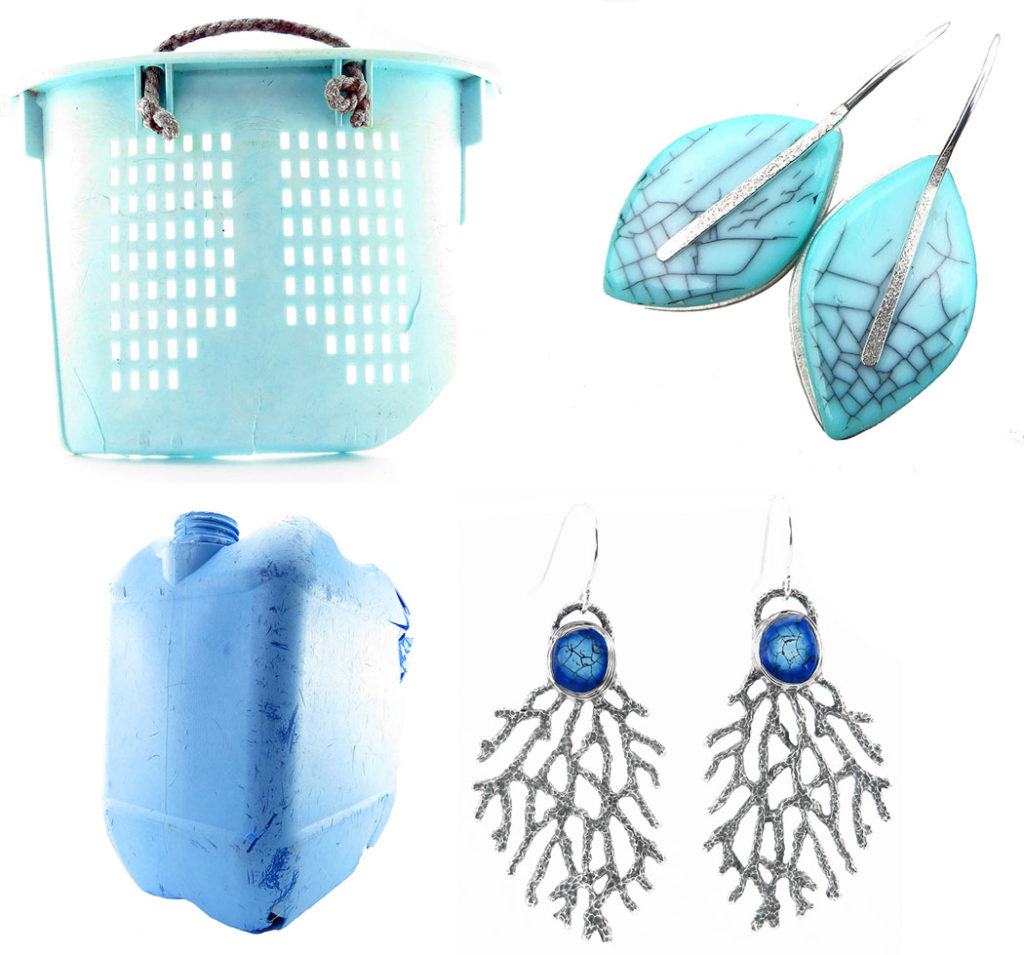
By Karen Valentine
When two artists each blend their creative talents with their passion for the environment, magic can happen. For both Kat Crabill and Mattie Mae Larson, growing up in Hawai‘i meant falling in love with the ocean—only to later realize how much the world was literally trashing it.
Ocean currents converging on the southern coastline of Hawai‘i Island have made its shores and beaches, especially Kamilo Beach, dramatic and horrific panoramas of pollution—plastic in particular. Hawai‘i Wildlife Fund, through grants, conducts monthly clean-ups there with volunteers utilizing removal equipment to handle tons of refuse annually.
Plastic pollution accumulated unchecked on the remote Kamilo Beach for decades due to its inaccessibility. Hawai‘i Wildlife Fund founder, Bill Gilmartin, organized the first cleanup there, it is said, after he witnessed the birth of a rare Hawaiian monk seal pup upon the massive piles of plastic.
Marine Debris Becomes Useful Items
Mattie Mae Larson, owner of Upcycle Hawai‘i, has loved art and creating things since her childhood growing up in Hōlualoa. She used to come to the remote Kamilo Beach as a child to climb 10-foot-high mountains of debris, searching for treasures.
“As kids, we called it plastic beach,” she recalls. “Literally, plastic was so cool when I was growing up in the 90s,” Larson says. “You had to have slap bracelets and banana clips in order not to be teased at school. It’s crazy to look back on that perspective,” she says now as she participates in ocean debris cleanups. “I remember having one of these moments in a college geology class at University of Hawai‘i at Mānoa where everything flashes in front of your face and I realized, oh my God, that’s not right, that’s my plastic, and fish are eating that.”
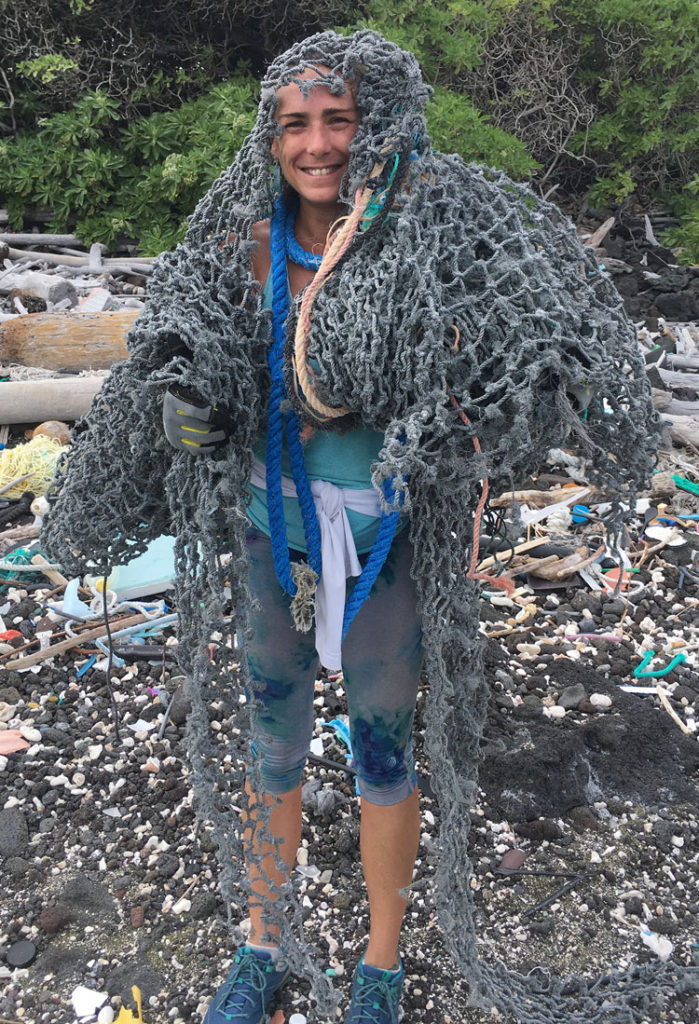
Mattie says, “My ‘resourcefulness’ started at a young age and so did my ‘upcycling.’ I was super fortunate to grow up with self-made creative and supportive parents in addition to the fortune of having [fine furniture maker] Tai Lake as a neighbor, who taught me how to run woodworking equipment as a child. I had SKEA [the Society for Kona’s Education and Art], Donkey Mill, and a super creative elementary school. I have been tinkering with aluminum pop-tabs and rubber innertubes ever since I was little. It was later into my creating career and more when I was in college at UH Mānoa that I starting feeling bad about some of the media I was using that consumed a lot of finite resources—metals, polymer clays, lasers, etc. I decided to take my creativity and go all-sustainable, which led to the creation of Upcycle Hawai‘i in late 2015. If these materials are going to outlive us, we may as well give them a job to do.”
She now uses many different recycled materials—including marine debris, plastic paper towel wrappers, and more—turning trash into dozens of colorful products like earrings, wallets, and small totes, just to name a few.
“I like to say I’m half mad scientist and half artist. Creating is the only consistent in my life, that which makes me happy and whole and literally a part of my identity.
“Our main materials are innertubes, reclaimed rubber, the melted marine debris, and those plastics that come in all shapes and sizes,” she said. Innertubes become stylish and functional tote bags and wallets. Pieces of fishing net and colorful ropes along with post-consumer plastic are melted into a plastic fabric to make jewelry, key rings, and nightlights.
The dynamic Mattie is focused on increasing production in order to use more and more recycled materials. With two part-time employees at her Hilo business, she says, “We are producing about a thousand bags a month, and when it comes to our smaller accessories, like keychains and earrings, we can produce multiple thousands per month.”
At the beginning of 2018, Mattie and her employees started keeping track of the volume of material they were diverting from landfills. Since then, as of the end of November 2020, they have diverted 404 pounds and 23,411 square feet of plastics and rubber.
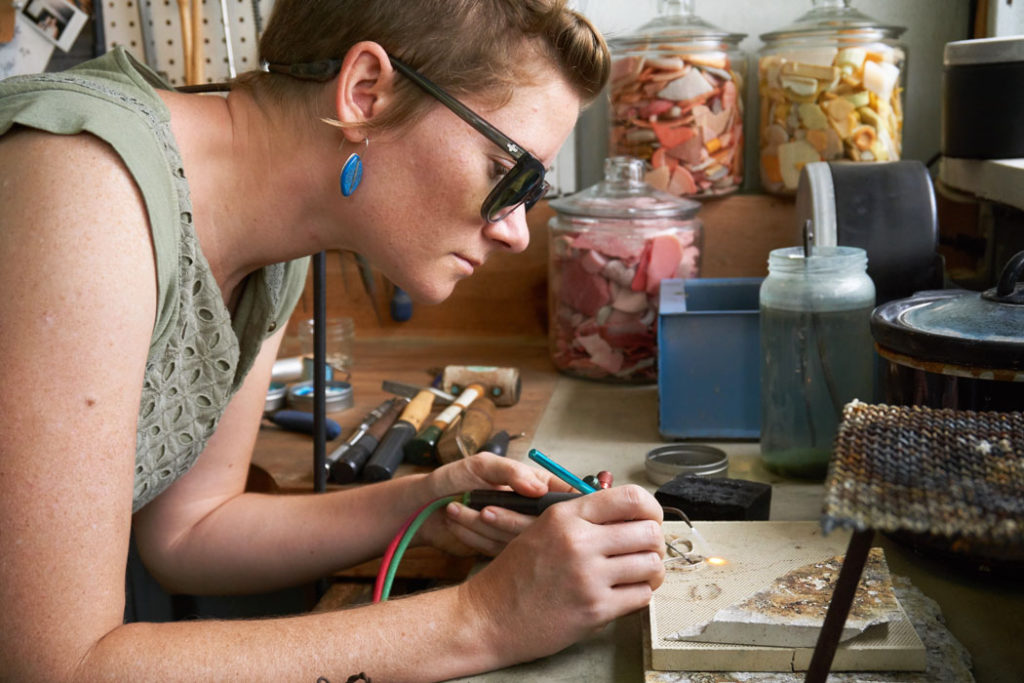
Upcycle Hawai‘i has been recognized for its efforts with a 2020 Zonta Pay It Forward Microgrant and by winning first place in the HIplan Demo Day pitch competition in July 2020. They were also finalists in the HIplan Business Competition in 2018, 2019, and 2020. “We are catching momentum, for sure, and it feels really good to have our hard work recognized.”
Trash to Treasure
Kona native Kat Crabill returned home after studying glass and metalworking at Virginia Commonwealth University, and working as a custom goldsmith. She had been gone from Hawai‘i Island for about 10 years. “When I went down to Kamilo and looked at the impact, I was pretty shocked the first time I saw it on my own. It wasn’t even a thing when I was a kid. It was weird having memories of a pristine ocean and then, as an adult, this transforming, eye-opening moment.”
She had already become concerned about the impact on the environment of plastic and other materials. “Working in my field, making custom engagement rings, I started thinking more and more about the impact on the environment from metals and human consumption,” she says. “I would make all these fancy gold and platinum rings and then go to the store and see more and more plastic items and bags we were consuming and tossing into the trash or getting caught on trees. At the time, I channeled that energy into my artwork; I got really angry and collected plastic bags, sewing them together into a 10-by-25-foot art piece, the size of a baby whale when born. It was a super formative process for me, asking myself, ‘What am I doing and how can I use my skills? I think I can make an impact with my skill set. It’s time for a new chapter—to move back and work with marine debris.’”
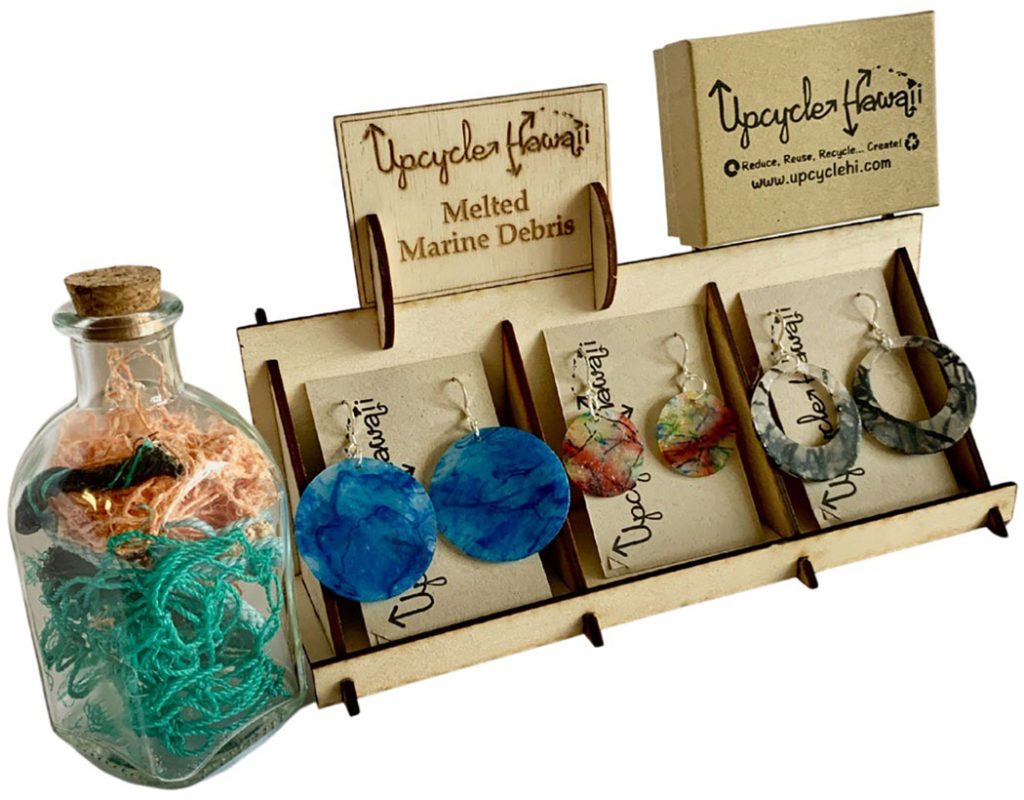
Kat got involved in marine debris clean-up and collected plastic jugs that had been floating in the ocean for years. She became fascinated with the colors and textures, so she took her years of talent and skill at making fine jewelry and simply switched out the materials. Instead of a gem or cabochon in a gold or platinum setting, she cuts a nurdle (the actual name of a small, pre-production piece of plastic) from a plastic vessel, grinds and polishes it into a fair replica of an agate, and places it into a setting she has cast from recycled sterling silver. Voila! There’s a piece of fine jewelry with a message. Hence the name of her business: Nurdle in the Rough, as in diamond in the rough, with the tagline “Jewelry with a Mission.”
“I’m not personally going to solve this. One person didn’t make this problem and one person can’t make it right. What keeps me going day to day is doing little bits and inspiring other people to do little bits. It’s like guerilla warfare. Once I started working with the material, I realized all the textures that are beneath the surface. I almost feel I’m like an archeologist, finding objects and revealing what’s inside. I grind it down like you would a gemstone, a cabochon, and polish it. It’s surprising how beautiful it can become. People can’t believe it’s plastic. I do all of my own wax carving and metal casting in-house, taking inspiration from ocean textures and shapes like coral or barnacles.”
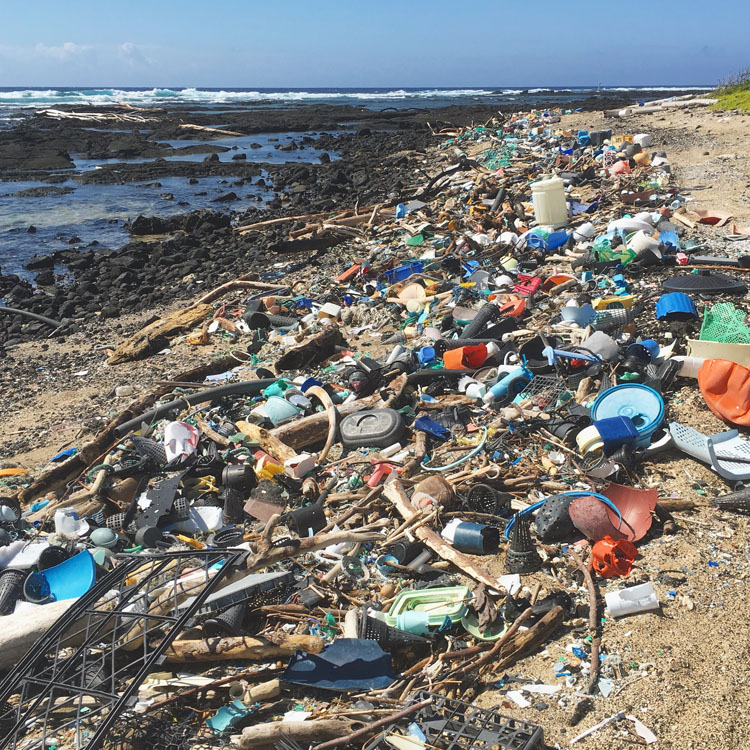
Asked how the “gems” hold up, she says, “They keep their shine and don’t break down.” (Of course, they’ve floated in the ocean for years!)
Nurdle in the Rough received a 2017 FedEx Small Business Grant to further its efforts of repurposing plastic into beautiful jewelry.
Hawai‘i’s efforts to push back on rampant plastics consumption have been among the boldest in the country. In 2015, it became the first state in the US to ban plastic bags at grocery stores. In 2020, Maui and Hawai‘i Island banned polystyrene containers. Also, the state legislature passed one of the most restrictive plastic bans in the US, prohibiting all single-use plastic food containers, including straws and utensils, as well as Styrofoam, with more restrictions planned for 2022.
Even with the new bans, itʻs likely Mattie Mae and Kat will never run out of materials to upcycle, which is good news and the bad news at the same time. ❖
For more information:
nurdleintherough.com
upcyclehi.com
wildhawaii.org



